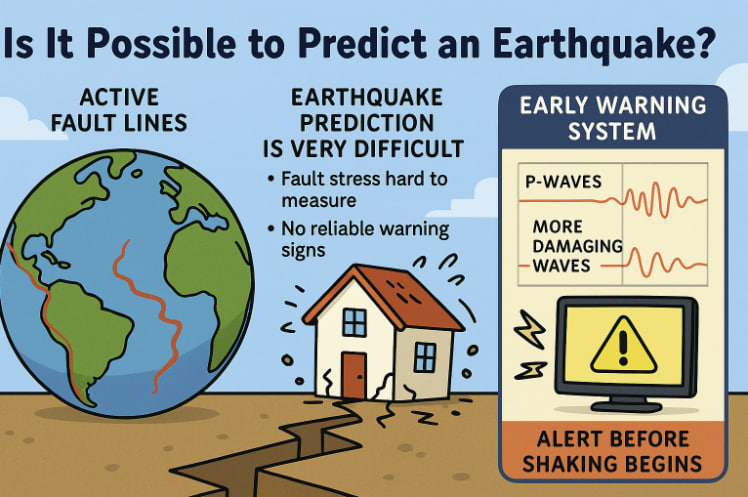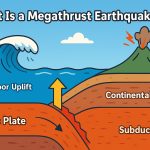Despite decades of scientific research, earthquakes remain largely unpredictable in terms of their exact time, location, and magnitude. While scientists can identify high-risk areas and estimate probabilities over long periods, short-term, precise earthquake prediction is not currently possible. However, advancements in monitoring technology and seismic research are improving early warning systems and risk preparedness.
Why Are Earthquakes So Hard to Predict?
Earthquakes occur when stress builds up along faults in the Earth’s crust and is suddenly released as seismic energy. This process is:
- Invisible underground
- Irregular and chaotic, even along well-known faults
- Largely influenced by complex geological variables
Unlike volcanoes, earthquakes often show no reliable precursors before they strike, especially in previously quiet regions.
What Scientists Can Predict
While short-term prediction is not feasible, scientists can assess risk by:
- Mapping active fault lines
- Measuring strain accumulation using GPS and satellite data
- Calculating the probability of a major quake in the next 10–30 years (e.g., San Andreas Fault in California or Nankai Trough in Japan)
This approach is called seismic hazard assessment, which informs building codes, insurance, and disaster planning.
Earthquake Early Warning Systems
Although prediction is not possible, early warning systems (EWS) are now in use in countries like Japan, Mexico, and the U.S. These systems detect the initial P-waves (primary waves), which travel faster but do little damage, and send alerts before the more destructive S-waves and surface waves arrive.
Such warnings can provide:
- A few seconds to over a minute of notice
- Time to shut down trains, surgeries, or gas lines
- Opportunity to seek shelter
Limitations include:
- Short lead time
- Geographic constraints (close to epicenter = no warning)
- Need for robust infrastructure and public education
Can Animals or Natural Signs Predict Earthquakes?
There are anecdotal reports of animals behaving oddly before quakes — barking, fleeing, or acting agitated. Some scientists study possible links between:
- Changes in groundwater chemistry
- Variations in radon gas emissions
- Electromagnetic signals
However, none of these have proven reliable or consistent enough for widespread use.
Future of Earthquake Prediction
Research continues in:
- Machine learning models analyzing massive seismic datasets
- Supercomputer simulations of crustal stress
- Swarm activity analysis (clusters of small quakes)
- Understanding slow-slip events (which may lead to bigger quakes)
While short-term prediction is still out of reach, the goal is to better understand patterns and mitigate risk through preparedness, not prophecy.
Glossary
- Fault line: A fracture in Earth’s crust where earthquakes occur.
- P-waves: Primary seismic waves that travel fastest and arrive first.
- Seismic hazard assessment: Evaluation of earthquake likelihood over time in a region.
- Early warning system (EWS): Technology that alerts people seconds before seismic shaking starts.
- Slow-slip event: A gradual shift along a fault that might release energy quietly or precede larger quakes.


